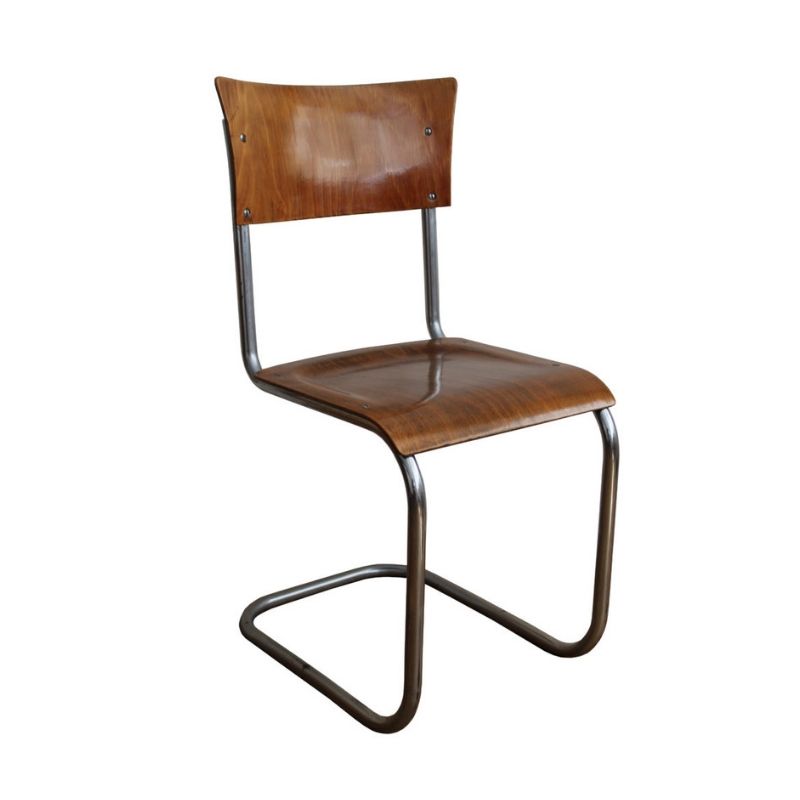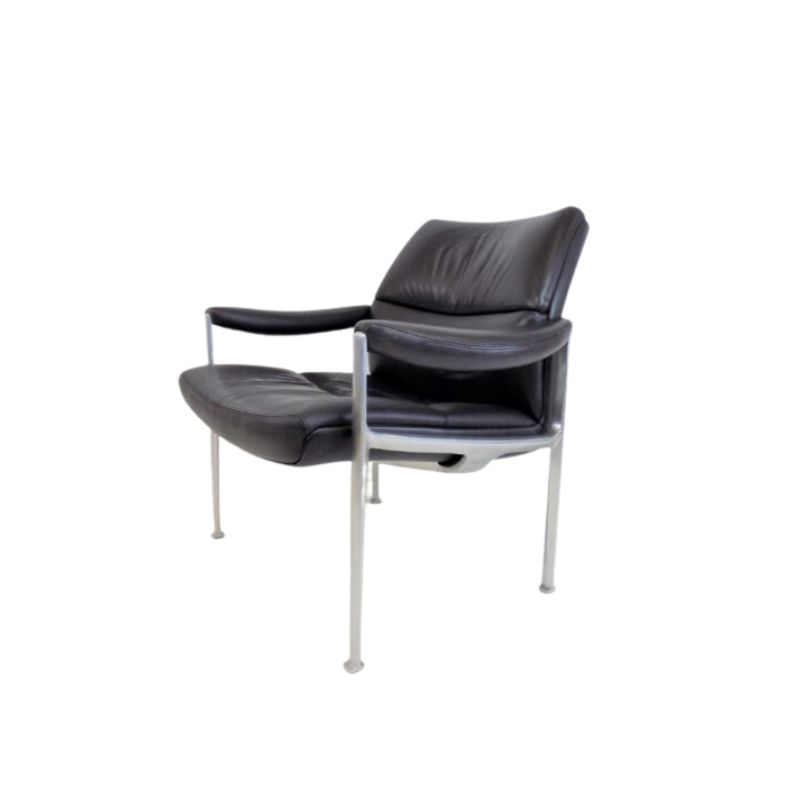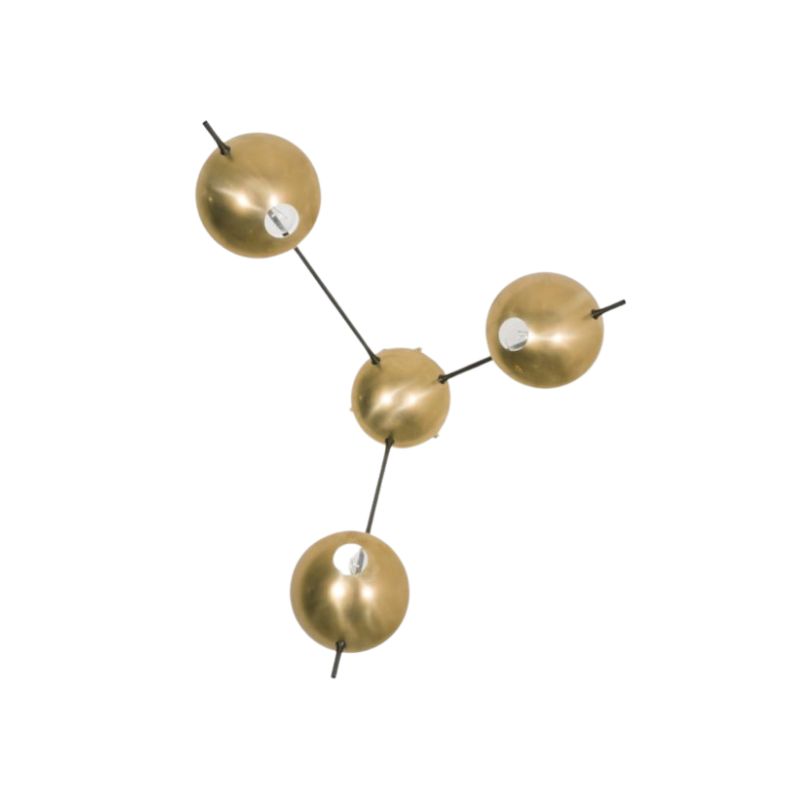Deep Design vs. Shallow Design Pt.3
But one also has to recall that the world's producers, distributors, marketers and retailers were hardly clamoring for the deep design of modernism when it emerged. They were industrial age producers operating suboptimally with Victorian aesthetics and materials. They were making money. They were in control. It was the designers that created something of an avant garde that developed a workable design vocabulary at the Bauhaus and a workable aesthetic at Cranbrook and in Denmark, and in turn caught the eyes of the wealthy trendsetters, who in turn caught the eyes of the producers and marketers, who in turn pressed modernism on the retailers.
What I'm saying here is that the advocates of deep design find themselves at a time when they must do what deep designers have to do once in awhile. They have to create another avant garde. They have to do the hard, potentially thankless work, of creating a new design vocabulary more fitting to our times and materials and market constraints than the current shallow design does. They have to build some enclaves of thought and research and experimentation beyond the university machinery that spits out shallow designers. They actually have to do the knowledge work that will underpin the next paradigm of design. They have to create the next Bauhaus if they are to ever create the next design vocabulary that will draw the entire process of artifact design, production, marketing, distribution and retailing back toward deep design.
I don't see any alternative to this approach. All innovation, starts with a small group of dedictated persons trying to redefine the problem and then rearticulate it through new principles, logics, aesthetics, that yield eventually a new design vocabulary. This usually attracts some great minds who then try to make it operational the way those at Cranbrook and in Denmark did. Then they move into the mainstream of the system slowly at first and then more swiftly later. And, yes, eventually they will be marginalized.
Deep Design vs. Shallow Design Pt.4
Deep design as I am conceptualizing it here is a means of revitalizing the system, not of replacing it. The system is the system. Not all wheels need to be reinvented all the time; that is why the system manifests both deep and shallow design over time. But clearly a system that fails to manifest the revitalizing forces of deep design will soon grow moribund.
To bring this full circle to the what vs. why question Koen intially raised and that I siezed onto, I suspect that the next avant garde might be jump started by moving beyond the present and past's emphasis on what and how of contemporary thought and by moving daring and courageously into the why.
A new design avant garde asking "why" first, as a design precept, will instantly move outside the blinders and constraints of a shallow design that has coopted most of deep design's modernist vocabulary, aesthetics and product models. It will also organically embed within its design process a contemporary social purpose even greater than that imbedded by the modernists.
Designers and engineers understand pretty intuitively that great problems offer some of the greatest opportunities for great solutions.
I believe we have a great problem before us both in society and in design. When the next generation of wise old designers believing in deep design can bond with a younger generation of bold and talented new designers and begin to work out the philosophical foundations and new vocabulary of a "why" based design avant garde, I am confident revitalization can occur. But it will take designers who are willing to take deep design into the age of complex, dynamic production, distribution, marketing and retailing contexts to do it. I am totally confident this will happen one day. Alas, I cannot say when.
Although I would
love to contribute to dcwilson's optimism and possible directions for the future, I need a little bit more time, but...
First of all we always had a name for both kinds of design. What you call "shallow design" was always called "styling" in design circles...sometimes it has a negative connotation but it is simply a fact of life that not all design activity goes back to very fundamental research. A designers career is often a mixture of "design" projects and "styling" projects, not unlike a professional writer or composer will from time to time venture into copywriting for advertizing or composing for commercial messages on T.V. The commercial world is a complex system with an even more complex market segmentation, and so it happens that a manufacturer or distributor needs a product to fill a gap in the assortment that does not require more or can support more than the result of a styling project. The question is not do you have to do it or not (One can always say NO) the question is how do you turn it into an opportunity to learn or to understand better the context in which this product is going to serv the users.
I have one of these clients for which products do not exist. Everything is "Merchandise" His major "playground" is of course Wall-mart. It does not really matter what kind of products he sells but lets say that the ones we have designed 10 years ago were sold for $35.00 retail, Two years later the fuction had not changed neither the mechanism, the contents, nothing but we re-designed or "styled" one that could be sold for $28.00 and could stack better in order to reduce further the transportation costs (Useless...not really if you consider it from an environmental point of view) But $28.00 was soon to high so, we went down to $24,95 and $18,95 to end up at $13.95...again the function was still a simple pedal activated garbage can. It has all kind of small features. It will of course hold every single standard plastic bag, but also a grocery bag if you are inclined to use them as garbage bags. In some there is a smart spring action that closes the lid even if it is bend way beyond the position in which gravity would close it....and so on. Now we are working on one that will be retailed for $8,95...still holds 40 liters of garbage or an equivalent in gallons. The weight of the product is now just over two pounds, less than 1 kilo.
cont.
It is quite a challenge to keep it simple because with that weight you need all kind of curved surfaces with small steps in the surface to give the plastic a minimum of stiffness. I could say no, and see it for what it is, an almost desparate attempt to help Wall-mart living up to their own slogan and promess to cut prices all the time... But I still find it interesting because I have learned a lot...which is not that evident when you are already considered (because of age) one of "the" specialists in injection moulding products. By now the stacking height is such that you can pack a dozen in a four feet (120 cm) high box, which is not easy when you have two inches (5cm) of pedal surface sticking out close to the bottom. Do I consider it "good design"? no, it certainly is "smart" or clever. It requires much more knowledge than the one that could cost $35.00 and it certainly was more of a challenge....and yes, one day I would like to put that knowledge to better use and design a can for which the consumer is prepared to pay $35.00. It would be a much better can than the first one for the same price.
I'm impressed by what you've accomplished with these waste baskets...Part 1
I can see why you keep getting retained by this "merchandiser." Frankly, this work seems vastly more sophisticated than much of the "designer brand" kind of design goods that I see today.
Making things cost less and ship better while still looking good and functioning well is certainly exemplary of what I was getting at when I said adapting Deep Design to the complexities of the contemporary marketing and distribution channels and the environment is a step that absolutely ought to be taken. The market is calling for it in unglamorous ways now, but that does not matter. Eventually it will call for it in glamorous ways too. And the old dinosaur and those he has trained will be ready. 🙂
I would not look at each of the reworkings of this humble trash can (no I'm not entirely oblivious to the irony of the metaphor of a trash can here) as a series of half re-workings and partial developments, so much as I would view them as a continuing design process being worked out in a series of iterations of the finished product. Series design. There's a long, venerable and respectable history of mastercraftsman reworking the same design repeatedly. Who knows? Perhaps this will be part of the new ethic/precept of the next wave of Deep Design. It seems a bit naive of the Modernists to me in retrospect to have thought that you could hammer something brilliant out that couldn't benefit from continual incremental improvements. And I assume this was how they tended to work, because I'm not aware that Corbu or Mies or whomever ever revisited their own designs and made them incrementally better.
Deep design redirected, as we are discussing here, does not have to start in a Bauhaus cloister either. Likely as not it WILL start piecemeal with incredibly resourceful designers like yourself whittling away at the problem incrementally from all different angles. Call what you are doing the slow accumulation of a new Deep Design's intellectual capital. At a certain point, this intellectual capital starts compounding. And as it does, it becomes feasible to step back and try to distill it into a new set of principles, logics, aesthetics, and precepts; that is the point that Bauhausing becomes timely. And after the Bauhausing, then Cranbrooking and Denmarking to achieve the operational and market acceptable.
I'm impressed by what you've accomplished with these waste baskets...Part 2
Why I am going on about this is not only to clarify the idea/paradigm of this development process of a new, or evolving Deep Design, but to say that in this digital age of accelerating crosspollinization of ideas and work, it is quite reasonable to suspect that if it took a century or two to accumulate the intellectual design capital necessary to precipitate the original blooming of Modernism, it might take only half or a quarter of that time today. And since Modernism collapsed of its own weight more or less by 1970, well, that means we are almost 40 years into the next cycle of incremental accummulation of intellectual design capital that will precipitate the next evolutionary spike of Deep Design.
Now it is worrisome that so many university bread designers are becoming disconnected from the master craftsman traditions and the deep design traditions, but if you are out there Koen, there have to be others. Every time I thought I was the only one going through something in life, I have discovered eventually that there were a bunch of us out there and that not only misery loved company, but that there was stength in numbers. 🙂
You have called yourself a dinosaur more than once on this site. I do not think you are, but you insist, so I will try to put the issue to you metaphorically this way.
Dinosaurs, it turns out, did not suddenly become extinct, after the big random asteroid impact that clouded the atmosphere, chilled the climate and wrecked the food supply for alot of creatures. Yes, dinsoaur populations took a very big hit, as did most creatures. But, in fact, it turns out they dominated, or were major players in, the world ecology for close to another 2 million years before dat ole black magic of extinction dat we know so well finally had its way. And alot of other creatures extincted in that 2 million years long before the dinosaurs did...perhaps postmodern dinosaurs. 🙂
I fully expect dinosaurs like you to be prowling the fields of design for a good long time, even if in diminishing numbers, because, though alot of the producers wish they didn't need you, well, they do need you. Somebody has to actually figure out how to make things. Not every product can be a copy of a copy of a copy. And I reckon there's a good bit of ecological design impact left in your species--perhaps a lot more than you think.
In fact, I'll go so far as to wager that this little stepping aside you're doing for the younger designers, is really just prelude to another one of those whopping bursts of creativity that the fortunately talented so often get to experience during the back stretch of their careers. I know I've found more inspiration and insight in what you've done and, particularly of late, what you have so generously written in response to my groping, awkward, bungling posts on this site, than I've found in all but a couple of colleagues in all my years.
Thanks.
If you need any help, please contact us at – info@designaddict.com









